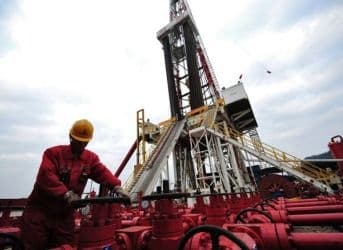While hydraulic fracturing, more familiarly known as “fracking,” a technique used to liberate shale oil and natural gas deposits, is in many countries coming under increased scrutiny because of environmental concerns, China has decided to embrace the process as a way to develop indigenous energy reserves.
According to the BP statistical review of world energy, In 2010 global natural gas consumption increased 7.4 percent, the biggest increase since 1984.
On 12 February China’s Ministry of Land and Resources (MLR) Vice Minister Wang Min said at a national geological survey conference that China will increase efforts to explore shale gas in 2012. Wang told his audience that China shale gas output will exceed 100 billion cubic meters by 2020.
Clearing the way for expanded shale gas production, China’s State Council recently decided to list shale gas as an independent mineral resource, bringing the country’s total number of shale gas resources discovered in China to 172.
China’s move towards exploiting shale natural gas is inevitable, given the country’s rising energy needs, coupled with growing uncertainty over the security of foreign supplies from such volatile regions as Africa and the Middle East. Last month National Energy Administration head Liu Tienan said at a national energy work conference, "It is always worrisome to have to sustain supply of energy and resources for a country with 1.3 billion people."
So, as China currently has no shale gas production, how is is going to develop the industry?
Simple – both partner with foreign firms and buy into them where possible, so as to acquire access to the technology.
On 24 February Chevron confirmed it has begun exploring for shale gas in China, stating in a filing to the U.S. Securities and Exchange Commission, "The company signed a joint study agreement to explore for natural gas from shale resources in the Qiannan Basin (in Guizhou Province in southwestern China) in April 2011 and commenced seismic operations in July 2011." While Chevron coyly declined to identify its Chinese partner, the Chinese media stated that it's a subsidiary unit of Chinese government-owned oil company China Petroleum and Chemical Corp., or Sinopec.
But Chevron won’t be lonely for long, as both Royal Dutch Shell Plc and BP Plc have been seeking partnerships with Chinese companies to tap China’s immense shale gas reserves, which the U.S. Energy Information Administration estimates at 1.275 quadrillion cubic feet of “technically recoverable” shale gas.
The U.S., by contrast, has a paltry 862 trillion cubic feet of estimated shale gas reserves.
But the U.S. has the world’s most advanced fracking industry and several Chinese companies are buying into U.S. firms working in the field.
On 3 January Oklahoma City-based Devon Energy Corp. announced that Sinopec subsidiary, Sinopec International Petroleum Exploration & Production Corp. (SIPC), had agreed to buy from Oklahoma-headquartered one-third of its interest in five new venture projects in the United States for $2.2 billion. SIPC accordingly will have access to Devon's interests in Niobrara, Mississippian, Utica Ohio, Utica Michigan and Tuscaloosa acreages 125 wells, totaling 1.2 million net acres. Devon Energy Corp. president and chief executive officer John Richels said, “This arrangement improves Devon’s capital efficiency by recovering our land and drilling costs to date and by significantly reducing our future capital commitments. We can accelerate the de-risking and commercialization of these five plays without diverting capital from our core development projects. This transaction also provides us further flexibility to seek exposure to additional new play types with less risk.”
There is one slight storm cloud on the horizon of this deal, however, which perhaps Devon Energy Corp. neglected to share with its new partners.
Last year fracking was thought to have spurred quakes in Lancashire, UK - of magnitude 2.3 and 1.5 and Gavin County, Oklahoma, of up to magnitude 2.8 on the Richter scale. Arthur McGarr, a geologist at the U.S. Geological Survey and his team studied seven cases of quakes induced by fluid injection, including an Oklahoma fracking site where 8,900 cubic meters of fluids were injected and found a proportional relationship between the volume of fluid injected and the magnitude of the earthquake. McGarr observed, “If you inject about 10,000 cubic meters, then the maximum sized earthquake would be about a magnitude 3.3,” adding that every time the volume of water doubles, the maximum magnitude of any quake rises by roughly 0.4. “The earthquakes may end up being much smaller, but you want to be prepared for the worst-case scenario,” McGarr concluded.
On 18 January 2010 Guizhou Province suffered a 3.4-magnitude earthquake, according to the Guizhou Earthquake Bureau, which triggered two landslides in separate locations, burying and killing at least seven people. The report concluded, “Guizhou, like other provinces in southwest China, is a quake-prone region and borders Sichuan province, where a magnitude 7.9 quake in May 2008 left almost 90,000 people dead or missing.”
Given such seismic activity, shale natural gas fracking may not prove to be such a bargain for China after all.
By. John C.K. Daly of Oilprice.com


















